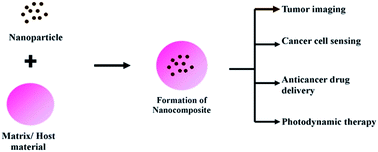Overview on in vitro and in vivo investigations of nanocomposite based cancer diagnosis and therapeutics
Abstract
Cancer is the second leading cause of mortality around the globe, despite the various advancements in science. The success of cancer treatment lies with early diagnosis and effective therapy making them inseparable. In recent years, there has been an extraordinary development in the field of nanomedicine with the development of new nanoparticles for the diagnosis and treatment of cancer. These studies are generally focused on creating novel nanocomposites for combating cancer. This review will serve as a one-stop arrangement for collating and providing future perspectives about the various nanocomposite based in vitro and in vivo investigations for cancer diagnosis and treatment. From our study, it is revealed that nanocomposite based diagnosis engrosses nanosensors for detection and conjugation of biomarkers, quantum dots, radiolabeling, delivery of contrast agent for better imaging of cancer development. In cancer therapeutics, nanocomposites hold enormous potential in maximizing the benefits of both targeted chemotherapy and photodynamic therapy. This review will encourage the need for in-depth molecular level examinations in relation to the cytotoxicity and bio-distribution of the developed nanocomposite should be evaluated in the clinical setting for better understanding. These supplementary studies on nanooncology would help in personalizing cancer theranostics making nanooncology a future trend.


 Please wait while we load your content...
Please wait while we load your content...